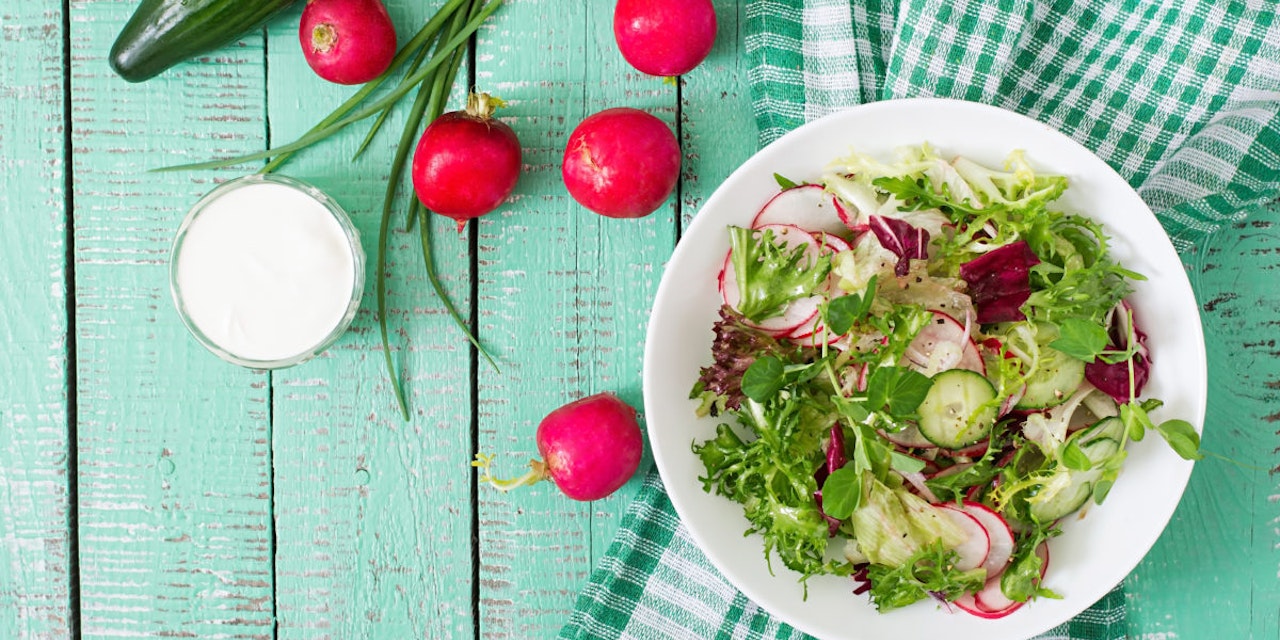Simple Salad Hacks to up Your Salad Game
1. Texture texture texture You are not a cow. You are not a rabbit. There’s no need to eat straight grass. Texture is the number one factor to r…
- Published: 5/31/2018
- Categories:
- 3 min. read

- Published: 5/31/2018
- Categories:
- 3 min. read
There’s a hashtag you may or may not have seen on Instagram #saddesklunch. It is exactly what it sounds like: pictures of people’s depressing lunches at their desks. Cans of soup and hot pockets do not a happy lunch make.
The good news is that you don’t need to settle. Even, and especially when you’re eating a salad. Here are a few simple salad hacks to help you take your salad game to the next level.
1. Texture texture texture 
You are not a cow. You are not a rabbit. There’s no need to eat straight grass. Texture is the number one factor to remember when you’re putting together a salad. Throw in crunchy walnuts, slice in fresh pear, add some dried fruit for chewiness, like goji berries or raisins. Leaves alone do not a salad make!
2. Get creative 
3. Check your flavor 
Believe it or not – different leaves have different flavors. Spinach is pretty neutral, arugula has a kick to it, redder leaves tend to have slightly darker, bitter flavors, cabbage leaves have quite a strong flavor, lettuce is basically water; build your salads based on the kind of flavor you’re looking for, or at the very least, pick a salad mix that has leaves you like the taste of, don’t just stick to spinach.
4. Think outside the box 
A salad can consist of vegetables other than leafy veg. You can have shaved broccoli, add peas, beets, asparagus, carrots, cucumbers; the list is literally endless. Using vegetable bases that aren’t leaves frees you up to experiment a little more and get more of the texture I was talking about. Don’t be afraid to mix it up!
5. Just Add Protein 
Or seafood, or vegetarian protein; whatever floats your boat. Chop it up and chuck it in – my personal favorite is salmon that’s been cooked and kind of torn apart and scattered in the salad – it’s so so good and feels so fresh!
6. Herbs 
Two herbs that are severely underrated: cilantro and mint. Chop a few leaves up and mix them into your salad for instant freshness – you’ll get fuller flavor and way more joy out of it!
All of the content and media on Lifesum is created and published for information purposes only. It is not intended to be used as a substitute for medical advice or treatment. Users should always consult with a doctor or other health care professional for medical advice. If you have or think you are at risk of developing an eating disorder, do not use the Lifesum app and seek immediate medical help.